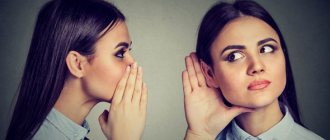Self-regulation is the body’s ability to maintain a balance of psycho-emotional state. Each of us has problems and difficulties that lead to depression and apathy and cause a storm of negative emotions. It happens that we worry about something, worry, worsening our mood even more. And at some point you give up, and the desire to act completely disappears. How can self-regulation help in such cases? How can you use it to restore inner harmony and calm down?
What is self-regulation
Mental self-regulation in psychology is the ability of an individual to analyze, evaluate, and then adjust both his own activity and its results. Essentially, this word means to put things in order. In this context, we can say that self-regulation of a person is a person’s conscious and organized influence on his own psyche, the main purpose of which is to change its properties and characteristics in the right direction.
Self-regulation of the body is based on patterns and their consequences, called psychological effects:
- motivating factors that encourage a person to act actively, while directing his efforts to change personal characteristics;
- the result of controlling voluntary or involuntary images arising in the subconscious;
- integrity and unity of cognitive processes that ensure the individual’s ability to influence his own psyche;
- the integrity of parts of consciousness and areas of the unconscious, with the help of which a person carries out self-regulation;
- functional connection between the emotional-volitional part of the personality and bodily experience, thinking.
Psychological self-regulation begins when an individual has a contradiction related to motivation. It can be safely called a driving force that encourages you to reconsider your inner world and some character traits.
Approaches in psychology
In domestic psychology, the definition of emotional regulation is found in the following contexts:
- self-regulation of personality;
- regulation of behavior;
- mental self-regulation;
- self-regulation of states.
The mechanism of self-regulation and regulation of emotional states was considered by F.B. Berezin. In his works, the regulation of the body is associated with mental adaptation. Berezin argues that psychological defenses counter anxiety and stress. The research conducted led Berezin to the conclusion that there are individual personality characteristics that help to successfully adapt to stress. This is the level of neuropsychic stability, self-esteem, emotional response in conflicts and others.
The well-known approach of R.M. Granovskaya. She divides all methods of emotional regulation into three groups:
- Eliminating the problem.
- Reduce the intensity of a problem by changing your perspective.
- Relieve the impact of a negative situation using a number of methods.
Regulate the condition of R.M. Granovskaya suggests using weakening motivation. For example, you can reduce emotional tension when achieving a goal by concentrating not on the final result, but on tactics.
Self-regulation functions
The main task of self-regulation is to change mental activity so that a person can achieve internal harmony and balance. What does this give?
- The ability to restrain yourself from “exploding” in a conflict situation. A quarrel can be prevented before it even begins.
- In times of crisis or severe stress, a person can think adequately and make the right decisions.
- The individual can regain emotional strength.
And finally, the last function is confrontation with problems. Self-regulation allows you to achieve harmony with yourself and in relationships with others, which significantly improves your quality of life and helps you cope with any difficulties.
When is self-regulation needed?
A person experiences the need for self-regulation of mental states in several cases:
- with frequent irritability;
- with imbalance;
- if there is a feeling of emotional overstrain, bad mood;
- with depression, apathy, lack of joy and satisfaction from life;
- with decreased performance and endurance.
There are other factors whose presence prompts you to think about self-regulation. We are talking about a lack of self-confidence, low self-esteem, the inability or even inability to influence what is happening around, a lack of willpower and courage. Here you can add dissatisfaction from interaction with others, for example, failures in your personal life.
It is worth noting the fact that stressful situations are characterized by disturbances not only in the mental state, but also in physical health. Thus, a person’s general health deteriorates, causeless pain and sleep problems appear (most often insomnia). This also includes problems with excess weight. Remember how often in stressful situations we “eat up” negative emotions with something tasty, for example, another piece of cake or candy.
Test of your self-regulation abilities
Give yourself a plus next to each applicable statement. The more of them, the better you can control yourself.
- You adhere to your own values and do not give in to provocations;
- You can bring yourself back to your senses when you are upset or depressed;
- You don’t get lost in difficult situations and are used to relying on yourself;
- You know how to adapt to circumstances;
- When things don’t go according to plan, don’t give up and keep moving towards your goal;
- You see the good in others, don't judge by first impressions;
- Do you prefer open communication, without pitfalls;
- Attentive and patient with the interlocutor;
- You can easily control outbursts of anger and irritation;
- You think of problems as opportunities;
- You strive to finish what you started;
- Don't avoid responsibility;
- If necessary, I am ready to take the situation under my personal control.
Kinds
There are the following types of human self-regulation:
- arbitrary;
- involuntary.
In the first case, a person clearly sees the goal and consciously controls his behavior to achieve it. This is how he develops individuality. In the second, the task of self-regulation is to survive and maintain health. It turns out that subconscious protection is triggered here.
In adulthood and old age, self-regulation is designed to maintain the connection between mind and emotions. But as the body ages, the balance shifts towards the latter.
An individual’s self-regulation is influenced by the conditions of the environment in which he lives, the characteristics of his inner “I” and communication with others, as well as the purpose of his actions.
From all of the above, we can conclude that self-regulation is methods and techniques for controlling feelings and emotions, as well as correct reactions to the norms of behavior and interaction with other people established in society.
Concept
Psychological self-regulation is an objective assessment of the situation, directed activity that allows you to control your own activity and correct the results of your actions.
There are two types of psychological self-defense:
- Involuntary - natural defense mechanisms that come from the subconscious. Focused on survival.
- Voluntary - conscious control of actions to achieve a set goal.
Self-regulation itself is formed throughout life, but self-awareness stops developing when a person stops learning responsibility and abandons self-development. Because of this, self-regulation suffers.
In adulthood, control over emotions is exercised by the intellect and is at its highest point. As we age, this balance shifts toward emotions. Because of this, psychologists compare old people with children.
Self-regulation depends on several factors:
- set goals;
- personality traits;
- environmental conditions;
- relationships between the subject and the surrounding world.
It is impossible to establish productive activities without a set goal; for this you need to additionally learn to control emotions.
Theories of self-regulation
In psychology, two theories of self-regulation are known.
System-activity
The author of this theory is L. G. Dikaya. According to her, self-regulation is an activity aimed at adaptation in a professional environment. It is also considered as a system for a person’s transition from unconscious forms of activity to conscious, almost automatic ones.
L. G. Dikaya conventionally identified several levels of mental self-regulation:
- Involuntary. It is based on excitation and inhibition, as well as activity uncharacteristic of the psyche. Such reactions fade away quickly and cannot be controlled.
- Arbitrary. Self-regulation is activated in critical situations. Here the intellect is united with emotions. All this manifests itself in increased motor activity, holding your breath, and a feeling of tension in the muscles.
- Conscious. A person not only realizes the presence of discomfort, but is also able to assess the severity of the condition. As a result, he decides to radically change the situation, using self-control, willpower, psychophysical exercises and auto-training.
The last and most interesting level is purposeful awareness. The individual understands that he can no longer tolerate what is happening in his life. Trying to get rid of unbearable discomfort, he reconsiders his values and priorities, and also analyzes his motives, desires and needs. There are two options for the development of events. In the first case, a person refuses activities that bring inconvenience and takes on his condition. In the second, the individual continues his activity, but at the same time includes self-regulation. Techniques such as self-hypnosis, introspection, and self-persuasion are used here.
In both cases, changes affect both behavior and the personality itself.
System-functional
The author of this theory of self-regulation is A. O. Prokhorov. In his opinion, self-regulation is nothing more than a change from one mental state to another. Moreover, the latter is connected with a person’s idea of the mood that he should have.
In order to obtain the desired reaction to conflict situations, an individual goes through several intermediate states. As a result, the reaction becomes conscious.
Prokhorov believed that the success of self-regulation directly depends on the level of awareness. It is also influenced by the accuracy of the presented image, the realism of feelings and emotions. The correctness of the achieved state is assessed based on bodily sensations, breathing, time, etc.
What is stress and why is it dangerous?
Stress is an invisible weapon that leads to the destruction of body cells and ultimately manifests itself through various diseases. After a stressful situation occurs, impulses are formed in the human brain that are sent to the cardiovascular, immune and endocrine systems. This is quite enough not only to disrupt self-control and lose vigilance, but also to cause a number of complex diseases. When stress becomes chronic, its effects can be devastating.
The famous neuroendocrinologist McEwen, winner of many prizes and awards, proved:
- prolonged stress has a very bad effect on human memory, which leads to atrophy of neurons,
— acute and prolonged stress suppresses the body’s immune functions, making it weak and defenseless to resistance,
— in the process of stress, the human body produces glucocorticoids, which in the short term have a beneficial effect on it. But as a result of prolonged stress and increased levels of glucocorticoids in the body, it prevents insulin from working in the body, which helps in the absorption of glucose.
It is important to note that stress interferes with:
- control your own fear,
- reduces reproductive functions in the stronger sex,
- damages teeth and gums,
- leads to imbalance throughout the body.
Components and levels of self-regulation
Self-regulation of emotional states is based on two mechanisms:
- Self-control. It first appears at about two years of age. It involves giving up something pleasant in order to achieve your goals.
- Agreement. Every person agrees that there is right and wrong behavior. At the age of 7, children can agree and refuse consciously.
A person who wants to master conscious self-regulation needs qualities such as: responsibility, flexibility, independence, perseverance, etc. You will also need will, the ability to find new motives and incentives to action. Based on this, the following levels of self-regulation can be distinguished:
- Operational and technical. This is a conscious activity that uses available means and resources.
- Motivational. This is a conscious direction of activity in the right direction by managing emotions and needs.
Self-regulation is not an automatic psychological defense mechanism. This is a conscious life choice. It is activated in situations where there is a need to change oneself, and not circumstances.
Psychotechnicians for behavior correction tasks
Decreased arousal
Effectively use:
- distraction and switching of attention;
- goal setting (consider different options);
- physical relaxation;
- psychomuscular and autogenic training;
- breathing exercises for relaxation.
Resource Activation
Effectively use:
- autogenic training for mobilization;
- increased motivation;
- breathing exercises for activity;
- plot performances;
- memories of active emotional states and the situations that caused them;
- mental and sensory stimulation;
- heterosuggestion.
Mental desensitization
Effective:
- presentation of successful behavior;
- self-hypnosis of confidence and neutral attitude towards harmful factors;
- deliberate passive attitude.
Relieving Emotional Stress
Effective:
- listening to music;
- relaxation;
- substitution;
- rationalization;
- fantasy.
Recuperation
Effective:
- meditation;
- suggested dream;
- self-hypnosis for quick recovery.
Regulation of the autonomic system
Effective:
- auto-training;
- heteroregulation;
- breathing exercises.
Features of self-regulation by gender
The emotional state of women is more fragile than that of men. Therefore, they see and perceive most situations differently. Self-regulation in their case does not have the same direction. If for men it is internal, then for the fair sex it is external.
The remaining differences are summarized in the table:
| Men | Women |
| Less likely to experience fear, anxiety, irritation and other negative emotions | Psycho-emotional state is less stable than in men |
| More often left alone, experience depression and apathy | Loneliness often causes depression |
| Self-regulation has a biological basis, which means there are more ways to express it | Self-regulation most often has a social nature |
Differences in male and female self-regulation are due to several factors:
- gender stereotypes;
- differences in the upbringing of boys and girls;
- type of professional activity;
- social roles.
You can also add to the list the level of personality development of a particular person, mental state, and age characteristics.
The formation of self-regulation
As mentioned above, a person learns the basics of self-regulation in childhood. The process of its formation looks like this:
- From 3 to 4 years. In most cases, changes in the functional state occur involuntarily. Involuntary speech and motor methods of self-regulation alternate with voluntary or conscious ones in a ratio of 7-8 to 1.
- From 4 to 5 years. Children learn to manage their emotions through play. At this age the ratio looks like 4 to 1.
- From 5 to 6 years. The ratio of involuntary and voluntary self-regulation returns to normal (1 to 1). At this level, children have access to imagination, memory, thinking, and speech.
- 6-7 years. At this age, the child has access to such methods of self-regulation as self-control and self-correction. The ratio changes in the opposite direction. For every 1 involuntary method of psychological self-regulation there are 3-4 voluntary, conscious ones.
- The interval is 8-20 years. During this period, the teenager, and then the young man, improves the methods of self-regulation he uses, and also adopts something from those around him.
- Age from 20 to 40 years. The methods of changing the emotional state directly depend on what activity the individual is engaged in. Most often we are talking about the use of conscious methods.
- 40-60 years old. Attention manipulations are still effective. However, more and more often people are replacing them with something passive, for example, a quiet rest, a walk in nature or a trip to the library.
After 60 years, self-regulation is carried out only by passive methods. In most cases, this is communication, thinking alone, etc.
Self-regulation techniques
First of all, it is worth saying that there are natural ways of self-regulation. These include:
- listening to classical music;
- walks in the fresh air, for example, in a nearby park;
- adequate rest and sleep;
- smiles, humor;
- reading your favorite books;
- drawing, embroidery;
- thinking about something good;
- singing, dancing;
- observing the beautiful landscape;
- pleasant memories, viewing photographs;
- sunbathing;
- communication with people who evoke exclusively positive emotions.
There are other methods and techniques of self-regulation:
- Relaxation. Everyone chooses their own way of relaxation. The main thing is that he achieves his goal: to achieve inner harmony, relieve muscle tension, regain control over feelings and emotions.
- Meditation. Helps you learn to concentrate, relax, relieve psycho-emotional stress and distract yourself from bad thoughts. Breathing techniques are most often used during meditation. The easiest option is to think about anything, just not about what annoys you.
- Desensitization. Involves conscious passivity, a clear idea of what successful behavior or activity looks like, and neutrality in relation to stimuli. All this is achieved through self-hypnosis.
- Autogenic training. Based on relaxation methods. They are exercises for relaxing muscles, developing the ability to accurately monitor the state of the body, and increasing volitional attitudes. The main task of this method of self-regulation is to relieve any tension and achieve absolute relaxation of the mind and body.
Don’t forget about visualization - creating a mental image of what you want, your goal. You need to imagine the end result and how you will go towards it.
Methods and techniques
People use different methods of self-regulation:
- meditation;
- relaxation;
- self-hypnosis;
- desensitization;
- autogenic training;
- reactive relaxation.
Relaxation
This technique can be voluntary or involuntary. When performing a free technique, the subject takes a relaxing pose and imagines a place in which he would be comfortable. Relaxation helps achieve several goals:
- restoring the body's energy;
- general health;
- relieving muscle tension;
- restoring mental balance.
The complex effect allows you to improve the general condition of the individual.
Desensitization
A technique used to get rid of anxiety and fear. There are several methods of desensitization:
- Relaxation. You need to calm down, scroll through disturbing situations in your thoughts. Repeated awareness allows you to get rid of fears and anxiety.
- Breath control. To regain freedom of action, you need to breathe calmly in a negative situation.
Another way is to eliminate fears with the help of pleasant impressions and new emotions.
Autogenic training
They were first proposed by a doctor from Germany, Schultz. Their principle is self-hypnosis. The techniques can be mastered through systematic exercises. The techniques are available to anyone. Thanks to training, you can cope with stress, strengthen strong-willed qualities, and normalize the emotional sphere.
Popular methods:
- To fill the capillaries with blood, you can think about heat, to relax the muscles - imagine lifting weights.
- Training to master the correct breathing technique. To do this, a person experiences a feeling of heaviness and warmth. They suggest to him that the heart rhythm is even. Once the subject is prepared, he should begin to repeat the phrase “I am calm.”
With the help of self-hypnosis, you can control your emotions and change your own state.
Meditation
The practice of meditation allows a person to relax, relieve emotional stress and fatigue. To carry it out, you need to allocate about 20 minutes every day. There are 2 types of meditation:
- relaxation;
- immersion in deep thought.
People who regularly practice meditation note its positive effects on the body.
In addition to the practices discussed, there are several methods of natural regulation:
- visiting literary evenings;
- listening to classical music;
- walks in the forest;
- intensive training, morning exercises;
- daily morning jogging;
- hardening;
- communication with charismatic people.
Some write down their experiences and negative emotions in a diary and analyze them. This helps to get rid of internal worries. It is important to use the techniques consciously.
Everyone has faced negative situations. A change in psychological state can lead to devastating consequences. To resolve conflict situations without a bad outcome, you need to learn self-regulation.
Self-regulation techniques and exercises
Psychologists have developed a lot of ways to relax and calm down, and normalize your psycho-emotional state. Everyone can choose the option for developing self-regulation that suits them.
Rocking
Take the most comfortable position for you, sitting or standing. Relax, tilt your head back. Close your eyes and gently swing to the sides, in a circle, or back and forth. Choose the pace and rhythm that is most comfortable for you.
Disclosure
Stand up straight, wave your arms several times in different directions, in front of you or in a circle. Now they need to be pulled straight out. Slowly spread your arms to the sides. If you have relaxed them well, the movement will happen as if by itself.
Do the exercise until you feel light. As you repeat it, imagine that by opening your hands, you are letting something good and positive into your life.
Five
No more than 30 seconds are allotted for the exercise. It can be done in whole or in part, as you wish.
So, stop, take a break from what you're doing. Look around and answer 3 questions:
- What objects of different colors did you see around you?
- What five sounds do you hear?
- What five tactile sensations are you feeling right now?
If you get distracted, return to the exercise again. If any extraneous thoughts appear, say that you heard them and start answering questions.
Thoughts on paper
This exercise will help you cope with feelings in those moments when it seems that your head is about to explode from tension. It is quite effective before bedtime.
On a blank sheet of paper or in an electronic document, write down absolutely every thought that comes to your mind. Write whatever you want, even if your head is chaos. Don't stop until there are no more thoughts left.
Useful Imagination
A very interesting exercise for self-regulation. How does it work? Stop for a second and imagine that you are biting a slice of lemon. Did you feel a sour taste in your mouth? In addition, you began to salivate. You didn’t eat lemon, but your body reacted in this way to the image you created in your imagination.
So, if you need to cheer up, imagine that you are already a cheerful and active person. Complete the image with pictures, for example, of the sun, which sends you its rays, thereby filling you with vital energy. You can relax in the same way. Imagine that you have just left the bathhouse and are drinking aromatic herbal tea.
With the help of imagination you can cope with negative emotions. For example, if you feel angry and angry, imagine breaking dishes. Perhaps the effect will not be the same as if you did it in reality, but the main thing is that it will be.
Correct breathing
It is a well-known fact that the psycho-emotional state is closely related to physical health, in particular, breathing and muscle tone. Therefore, by performing breathing exercises, you can calm down, relax, and put your mind in order.
Breathe on a count, focusing on the movement of the second hand. Inhale through your nose for 4 counts, freeze for 2 seconds, exhale through your mouth for a count of 6 or 8. The ideal option is to exhale 2 times longer than the inhalation. Do 10-20 reps.
Attention! If you need not to relax, but to cheer up, do the opposite: inhale slowly and exhale quickly, sharply.
Muscle relaxation
Take a lying or reclining position. Focus your attention on any muscles in your lower body. Tighten them as hard as you can. Stay in this position for 5 seconds. Do this while inhaling. As you exhale, relax completely.
Repeat the exercise for each muscle group, moving upward.
Attention! Experts recommend not straining your eye muscles if you have any vision problems.
Breathing exercises
There are many options for breathing techniques, but it is a mistake to believe that they are all aimed at slowing down mental reactions. On the contrary, there are exercises that activate the brain.
Relaxation exercises
The goal is to master conscious natural breathing, relieve muscle tension and tension, and calm emotions. I want to introduce you to some exercises.
"Rest"
Place your feet shoulder-width apart, straighten up, and inhale. As you exhale, bend down, relax your neck and shoulders (as if they were hanging calmly on their own). Stay in this position for 1-2 minutes. Breathe deeply, watch your breathing. Slowly straighten up.
"Conscious Breathing"
Sit comfortably and relax, but keep your back straight. Take your first shallow breath in and out. Then inhale and exhale a second time, but deeper. And for the third time, inhale with your whole chest, but exhale very slowly (one in three).
"Breathing under stress"
Breathing is rhythmic and combined with walking. The scheme is as follows: two steps - inhale, two steps - exhale. Gradually increase the duration of exhalation, that is, then it will be: two steps - inhale, three steps - exhale, and so on.
Arousal exercises
The purpose of the following exercises is to increase neuropsychic activity and activate resources.
"Lock"
Sit up straight, place your hands on your knees and clasp them together. Inhale and at the same time raise your arms up (palms facing up). Hold your breath for a couple of seconds, exhale sharply through your mouth and “drop” your hands on your knees.
"Getting ready for work"
You need to breathe according to a certain pattern described below. The first number is inhalation, the second (in brackets) is retention, the third is exhalation.
2(2)+2; 4(2)+4; 4(2)+5; 4(2)+6; 4(2)+7; 4(2)+8; 8(2)+5; 9(4)+5; 10(5)+5.











